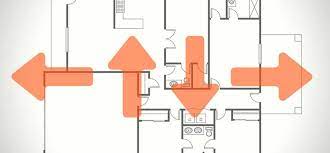
Building Up vs. Building Out: Choosing the Right Direction for Your Home Extension
When your home starts to feel cramped, and you need more space, extending your living area is a common solution. However, the decision of whether to build up (adding a second story) or build out (expanding the ground floor) can be a challenging one. Both options have their benefits and considerations, and choosing the right direction for your home extension requires careful thought and planning. In this blog, we’ll compare the advantages and factors to consider when deciding between building up and building out.
Building Up: Adding a Second Story
Benefits:
- Maximizing Space: Adding a second story allows you to maximize your existing land without encroaching on your yard or outdoor space. This is especially advantageous if you have a small or narrow lot.
- Views and Natural Light: A second story can provide breathtaking views and increased natural light. You can enjoy scenic vistas, better airflow, and more daylight.
- Maintain Outdoor Space: Building up doesn’t sacrifice your outdoor space. Your yard remains intact, which is essential for those who love gardening or outdoor activities.
- Improved Privacy: Having a second story often means greater privacy for bedrooms and other living spaces since they are elevated above ground level.
Considerations:
- Structural Integrity: Adding a second story involves significant structural modifications, which can be expensive and may require reinforcing the existing foundation.
- Access: Building upward requires a safe and convenient way to access the second floor. This may involve adding stairs, which can take up valuable indoor space on the first floor.
- Cost: Building up is generally more expensive than extending outward due to structural work and the need for a new roof.
- Local Regulations: Check local zoning laws, height restrictions, and building codes, as some areas may have limitations on how high you can build.
Building Out: Expanding the Ground Floor
Benefits:
- Accessibility: Expanding the ground floor is often more accessible for people of all ages, as there’s no need to navigate stairs or elevators.
- Cost-Efficiency: In many cases, building out is more cost-effective than building up since it involves less structural work and no need for a new roof.
- Ease of Construction: Extending the ground floor tends to be less disruptive during the construction process, as it doesn’t require the removal of an existing roof or major structural changes.
- Design Flexibility: You have more design flexibility when expanding outward, as you can easily blend the extension into the existing structure.
Considerations:
- Space Limitations: Expanding outward might not be an option if you have limited yard space or if local zoning regulations restrict the extension.
- Yard Impact: Extending the ground floor can consume outdoor space, reducing your yard’s size and potentially affecting landscaping or outdoor activities.
- Loss of Natural Light: Building out may block natural light and views for the existing rooms near the extension.
- Room Configuration: Expanding the ground floor can disrupt the layout of existing rooms, which may require rearranging or remodeling the interior spaces.
In conclusion
The decision to build up or build out for your home extension ultimately depends on your unique circumstances, needs, and preferences. Careful consideration of factors such as budget, available space, local regulations, and your long-term goals will guide your choice.
If you value your outdoor space, enjoy views, and can accommodate the expense, building up may be the right choice. On the other hand, if you’re looking for a more cost-effective and accessible option, building out may be the better solution. Whichever direction you choose, consult with experienced architects and builders to ensure your home extension project is executed smoothly and to your satisfaction.






